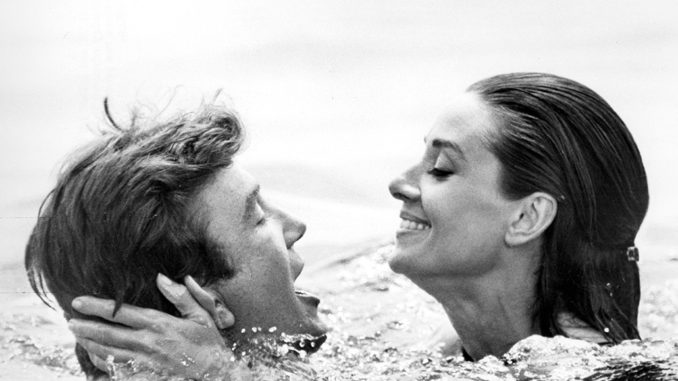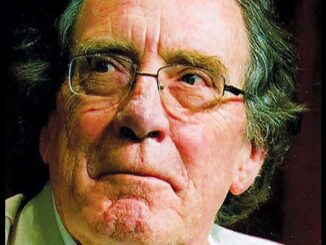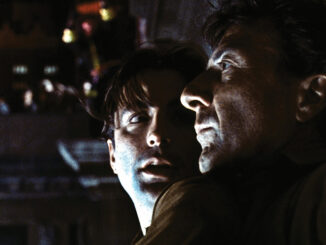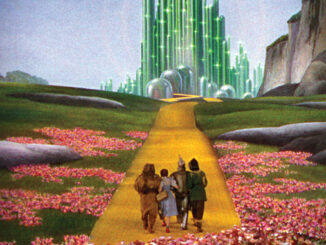
by Anita Brandt Burgoyne, A.C.E.
My childhood film memories involve my brother and me being dropped off to see movies like How to Stuff a Wild Bikini, Fantastic Voyage and the Flint movies with James Coburn. No lasting impact, no artistic revelations, nothing. The film that inspired me came much later, but I was led to editing because my dad, Buzz Brandt, was an editor.
My parents divorced when I was little and my dad had us kids on the weekends. Like many editors, he spent some weekends at work, so my brother and I would sometimes go along. In his cutting room, I quickly learned I preferred 35mm film equipment to paint-by-number sets. I loved the synchronizer, and winding film back and forth on the reels. I hand-drew animated sequences on leader and made my dad run them through the Moviola. The editing room was home to me before I knew what really happened there. I did not know what he did exactly, but I wanted Dad’s job so I could work in that fantastic room everyday.
As a critical studies major at USC’s film school, I gained an appreciation of movies as an art form and of editing in particular. As I spent afternoons in the Norris Theater watching great films—Gunga Din, Bringing Up Baby, Stagecoach—I thought two things: First, “I can’t believe they’re grading me to do this,” and second, as I saw how editing contributed to the greatness of the films, I decided, “Dad’s job is even cooler than I thought, and I really do want to do that job!”
I was an apprentice and assistant editor for eight years total, sometimes working for my dad. I loved those jobs because he was a patient and dedicated teacher of his craft and I was eager to learn. After a while, he let me try some editing. I started on simple scenes, but gradually moved onto more complicated sequences. After years as his student, I learned the beautiful subtleties of graceful editing and I loved it. During that time, I went to a screening of Stanley Donen’s Two For the Road, and it was the first time I was completely smitten with what seemed like magical film editing.
The amazing thing about the film is that we bounce around the couple’s journey through life in such a seemingly random series of scenes, yet the film feels seamless, graceful, funny.
In the film, we first meet Mark and Joanna at the 12-year point in their marriage. They’re icy and sarcastic with each other, for reasons we don’t understand. But we quickly cut back a dozen years to when they first meet while traveling separately to the French Riviera. It was (almost) love at first sight and it quickly becomes clear that the couple is destined to be together.
The film cleverly cuts back and forth between five different periods in Mark and Joanna’s marriage. It’s possible to keep track of each era by the car the couple drives, the style of clothes they wear, the degree of wealth they’ve achieved and, of course, the state of their marriage––all so beautifully created by the performances of Albert Finney and, especially, the brilliant Audrey Hepburn. They literally make this same journey to the South of France so exactly each time, that we often see Mark and Joanna pass themselves along the same road in different eras.
The characters move from crazy-in-love to happily married two years to about six years into marriage with a newly pregnant Joanna. Then, finally, we enter a period of unrest, with both beginning extra-marital affairs and questioning their commitment to each other.
The amazing thing about Two for the Road is that we bounce around the couple’s journey through life in such a seemingly random series of scenes, yet the film feels seamless, graceful, funny––and heart-wrenching. As many times as I’ve watched it, I find it fresh and charming. I laugh each time. Likewise, I’m genuinely sad when it seems they may not make it together after all.
The film is a marvel of editorial choreography and inspired me in my craft. It’s a dance-like travel through time and space, which seems so fitting for a director like Donen. But he was helped enormously by his editors, Madeleine Gug and Richard Marden. They enhanced the wonderful, snappy banter between Mark and Joanna with their wonderful, snappy pacing throughout every scene.
Road films are journeys of self-discovery––or in this case, a journey of self-discovery in relation to another person. It’s a journey of marriage, with all its highs and lows and in-betweens. After all the trial and tribulation and disappointment and success and despair and indifference that is their marriage, it ends on a wonderfully simple, happy note and leaves me feeling hopeful. I have always kept the film’s lobby card framed in my house, because just seeing the two actors playfully giggling while hiding under the covers never fails to brighten my day.





